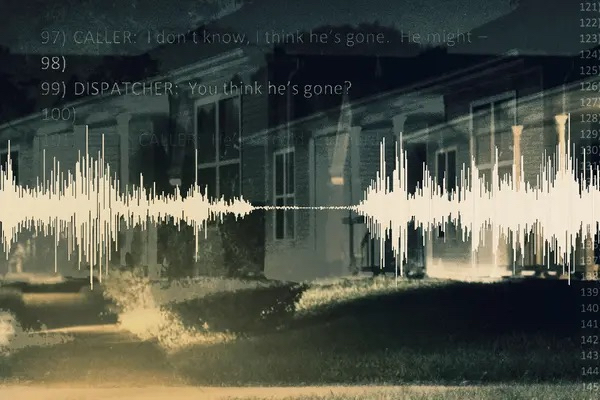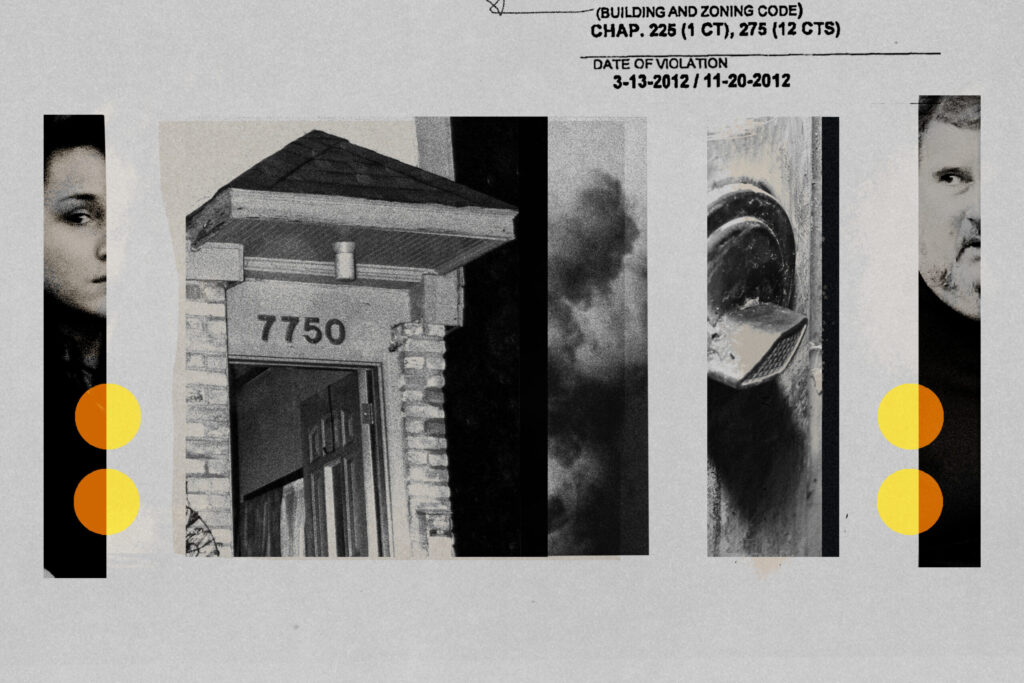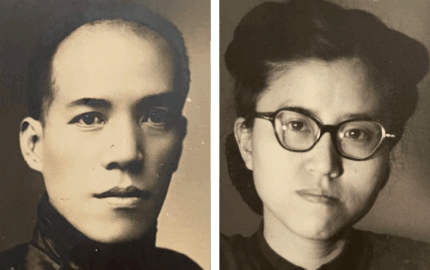The Austin American-Statesman is winner of the 2022 Taylor Family Award for Fairness in Journalism for its responsive reporting in the aftermath of the May 2022 school shooting in Uvalde, Texas, in which 19 students and two teachers were killed.
The Statesman, together with Austin television station KVUE, exposed the deeply flawed and delayed response by law enforcement to the shooting at the Robb Elementary School by publishing a hallway security video that showed events as they unfolded. The chilling footage provided answers to a community desperate for information at a time when official accounts about the events in the school were still inaccurate and inadequate. The paper also told stories about the victims and their families and provided a swift translation into Spanish of an important government report about the shooting.
Judges selected two finalists for the Taylor Award:
- “Words of Conviction: Tracing a Junk Science Through the Justice System” by ProPublica reporter Brett Murphy reveals the origins and scope of 911 call analysis, a dubious technique that has been used by some law enforcement departments to prosecute people across the country.
- “The Landlord and the Tenant” by Milwaukee Journal Sentinel reporter Raquel Rutledge and ProPublica reporter Ken Armstrong is a long-form narrative account of the systemic failures that led to a deadly fire in Milwaukee in 2013. The reporting offers nuanced profiles of the two individuals at the center of the story.
The Taylor Award Winner: The Austin American-Statesman
The decision to publish the Robb Elementary School shooting video was difficult to make. The Austin American-Statesman and Austin ABC affiliate KVUE-TV had to weigh the need for transparency and public’s right to know what happened during the worst school shooting in Texas history with the sensitive nature of the footage and the possible harm it could inflict on already grieving families. The two newsrooms took care to balance those competing ethical concerns and addressed them by editing parts of the video.
Investigative reporter Tony Plohetski, who helped lead the Statesman’s coverage and works in partnership with KVUE, obtained the first image from inside the school and the 77-minute security video. That recording ultimately discredited false statements made by law enforcement and government officials who had hid the truth about the responders’ actions for weeks.
When lawmakers said that translating a 77-page report from the Texas House of Representatives about the shooting would take two weeks, the Statesman partnered with Spanish-speaking journalists from the USA Today Network and other independent journalists to do the work in just four days and then printed and distributed 10,000 copies to local residents. The Statesman also focused on stories of the victims and their families, publishing reports in English and Spanish and chronicling the ways the community was trying to heal.
In addition to Tony Plohetski, the American-Statesman staff who contributed to the Uvalde coverage include executive editor Manny García; interim managing editor Bob Gee; reporters Niki Griswold, Luz Moreno-Lozano, John Moritz and Nusaiba Mizan; photojournalists Aaron Martinez and Briana Sanchez; and video producer Nate Chute.
Taylor Award judge Shannon Hahn said: “The coverage by the Austin American-Statesman and its staff is nothing short of amazing. It is undeniable that this was about so much more than a story for them. It was about giving everyone knowledge of the events that day but doing so tenderly and with compassion for the victims and their families. The staff should be applauded, again and again. They stood for their community throughout outrage and mourning. Faced with ethical decisions throughout their coverage, they stayed true to their goal of empowering their community, and the nation really, with truth and transparency.”
Taylor Award Finalists

For his two-part series, ProPublica reporter Brett Murphy examined 911 call analysis, a dubious law enforcement training program created by retired Ohio police officer Tracy Harpster that has been used in relative secrecy across the country. Hundreds of police officers, prosecutors and dispatchers who have taken the course have been taught to determine the guilt or innocence of 911 callers simply by the words they use and their speech patterns when reporting an emergency. The problem? The technique is junk science and has never been authenticated by researchers, including the FBI.
Murphy documented more than 100 cases in 26 states in which law enforcement used 911 call analysis against defendants. He traveled to multiple states, interviewed some 120 people and sent more than 80 public records requests to local agencies. He obtained and then sifted through thousands of emails as part of his reporting.
The first part of the investigation tells the story of Jessica Logan, a young mother convicted of killing her baby after a detective analyzed her 911 call. The investigation revealed numerous problems with her prosecution. Immediately following its publication, attorneys from the Exoneration Project and the Center for Integrity in Forensic Sciences offered to represent Logan in her appeal.
The second story profiles Tracy Harpster and identifies the institutions that enabled him by certifying his methods and funding his program with taxpayer dollars. The reporting led lawmakers in California to begin investigating how 911 call analysis may have been used in the state and what can be done to stop it. Local reporters in the U.S. and in Canada also have begun to examine how 911 call analysis has been used in their own areas.
Murphy’s investigation has led to calls by prosecutors, judges and defense attorneys nationwide to ban the use of the technique, review past convictions in which it was used and sanction prosecutors who used 911 analysis in court, despite knowing the information was inadmissible.
Taylor Award judge Jason Grotto said: “I found the reporting on this project extremely meticulous and the impact a clear measure of its importance. The execution was top-shelf and left me outraged at the widespread use of 911 call analysis in criminal cases, something that had gone unnoticed by criminal justice watchers. The justice system is predicated on fairness, and this effort appears to have triggered a widespread assessment of this shady form of ‘evidence.’”
“The Landlord and the Tenant” (The Milwaukee Journal Sentinel and ProPublica)

To tell the story of a deadly house fire in Milwaukee that happened 10 years ago, investigative reporters Raquel Rutledge at the Milwaukee Journal Sentinel and Ken Armstrong at ProPublica collaborated to write a 36-chapter narrative about two complex characters and the string of events that led to the death of three young children.
The story focuses on Angelica Belen, a renter and mother of the victims, and Todd Brunner, her landlord. The story weaves a tale of how their two lives intersect and the very different outcomes for them within the judicial system. Presented in a way that encourages readers to reach their own conclusions, the story introduces key details about the about Belen and Brunner before revealing what happened the day of the fire.
The story took nine months to report. Rutledge and Armstrong dug deep and filed public records requests to obtain the emails of federal prosecutors, the FBI and police; reviewed the notes of code inspectors, process servers and fire investigators; examined building maintenance reports; viewed fire-scene photos; and listened to more than five hours of recordings in which the police interrogated Belen. The reporters also gained access to Children’s Court files to examine the foster care system and to document its workings and failures.
When possible, dialogue was reconstructed using audio recordings rather than transcripts of events, and with interviews with key characters, to capture the true nature of the conversations. The story exposes the much larger problems that can result when hazardous properties are leased out by careless landlords – dangers that continue to put renters at risk today.
Contributors to the story were newsroom developer Andrew Hahn and data reporter Daphne Chen at the Milwaukee Journal Sentinel along with research reporter Alex Mierjeski of ProPublica. Visual editing, design and development was provided by Sherman Williams at the Journal Sentinel and Alex Bandoni and Anna Donlan at ProPublica.
Taylor Award judge Daniel Chang praised “The Landlord and the Tenant” “for its unorthodox approach to telling the story, for its extensive and thorough reporting and research of events and people, for its engaging narrative that juxtaposed two very different lives and showed how each had been shaped by their upbringing and by the opportunities society afforded them, including the justice system. And by excluding a nut graph, the reporters allowed the reader to weigh the people and events without judgment or predetermination, and to draw a more complex conclusion about the tragedy that occurred.”
Taylor Award Judge Hannah Dreier added: “Aside from being a brilliant piece of accountability reporting, this story made me rethink my own approach to fairness as a reporter. This team took the story of a woman many reporters would have considered too flawed to hang a project on, who had left her children alone for hours in an unsafe home and went all the way back to the beginning in a way that would be inconceivable in a conventional news story. The result is a portrait of multiple systemic problems that lead to deaths in house fires.
The judges for the 2022 Taylor Award were Ellen Kreth, publisher and owner of The Madison County Record, and Shannon Hahn, the newspaper’s general manager, winners of the 2021 Taylor Award; Hannah Dreier, an investigative reporter at The New York Times and a 2021 Taylor Award finalist; Daniel Chang, a correspondent for KFF Health News and a 2021 Taylor Award finalist; and Jason Grotto a senior reporter for Projects and Investigations at Bloomberg News and 2015 Nieman Fellow, who won the 2017 Taylor Award.
The Nieman Foundation for Journalism at Harvard educates leaders in journalism, promotes innovation and elevates the standards of the profession. More than 1,700 journalists from 100 countries have been awarded Nieman Fellowships since 1938. The foundation also publishes Nieman Reports, a website and print magazine covering thought leadership in journalism; Nieman Journalism Lab, a website reporting on the future of news, innovation and best practices in the digital media age; and Nieman Storyboard, a website showcasing exceptional narrative journalism and nonfiction storytelling.



